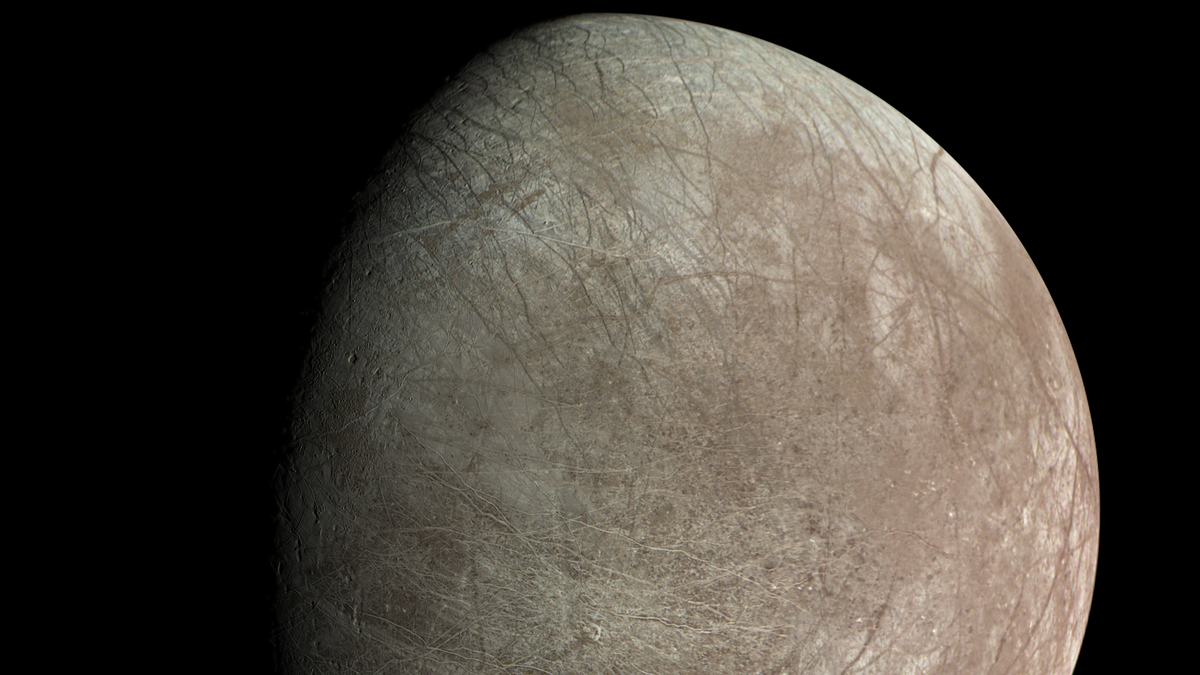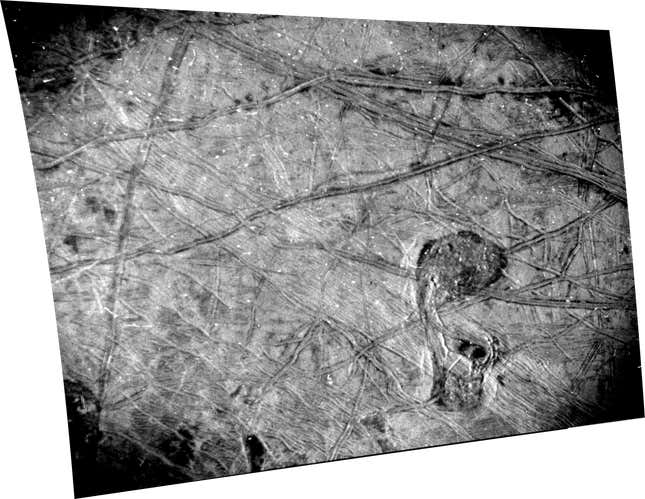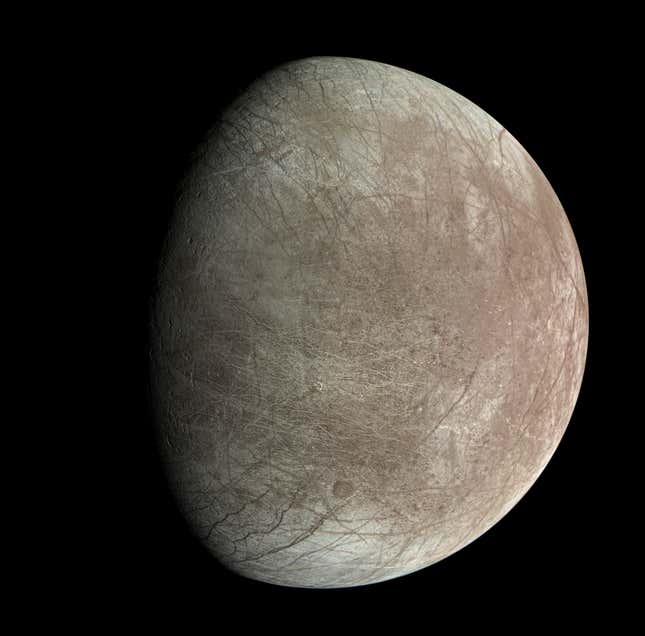
On September 29, 2022, NASA’s Juno spacecraft made its closest flyby of Europa, coming within 220 miles (355 kilometers) of the frozen surface of the Jovian moon. A close-up image of Europa has revealed stunning details of the moon’s chaotic terrain, suggesting that its icy crust is not where it once was. The images also showed a newly discovered feature dubbed the “platypus” for its strange shape.
The results, made possible by JunoCam images, were recently published in a journal Planetary Science JournalWhile the results derived from high-resolution images of the spacecraft, taken by the Stellar Reference Unit (SRU), were published in the journal JGR Planets.
Europa is thought to have a salty ocean beneath its icy crust, which contains twice as much water as all of Earth’s oceans combined, according to NASA. The moon’s rugged terrain is characterized by complex networks of ridges and dark spots, suggesting plumes of water vapor may be rising into space.

The black-and-white image of Europa’s surface was taken by Juno’s SRU during a close flyby, and it reveals an area criss-crossed with a network of fine grooves and double ridges, or pairs of long parallel lines, indicating raised features in the ice. . The small white dots that appear in the image are high-energy, penetrating particles, the result of the intense radiation environment around the Moon. Meanwhile, the dark spots may be related to fluid bubbling from beneath the ice (also known as cryovolcanic plume activity).
At the bottom right of the image is the platypus, which is 42 miles (67 kilometers) across. It is characterized by prominent ridges and dark reddish-brown material, with a lumpy matrix filled with blocks of ice ranging from 0.6 to 4.3 miles (1 to 7 km) across.
Around the edges of the platypus, hill formations collapse into the obvious feature. These formations support the theory that the Moon’s icy crust may give way in areas where pockets of salty water from the subsurface ocean exist below the surface. “These features indicate current surface activity and the presence of subsurface liquid water on Europa,” Heidi Becker, principal investigator of the SRU at NASA’s Jet Propulsion Laboratory, said in an article. statement.

Images taken by the visible light camera aboard the Juno spacecraft, JunoCam, show the cracks, ridges and bands that crisscross the moon’s surface in exquisite detail. These features on Europa’s surface have erased terrain more than 90 million years old, according to astronomers NASA.
These surface features support the theory that Europa’s outer icy crust is free-moving and floating. The “true polar wander” theory, as it is known, claims that the ice crust at Europe’s North and South Poles is not where it used to be.
“True polar wandering would occur if Europa’s icy crust separated from its rocky interior, placing high stress levels on the crust, leading to predictable fracture patterns,” says Candy Hansen, a Juno associate researcher who leads planning for JunoCam, at Planetary Science. . The institute in Tucson, Arizona, said in a statement. “This is the first time these faulting patterns have been mapped in the Southern Hemisphere, suggesting that the impact of true polar wandering on Europa’s surface geology is more extensive than previously identified.”
JunoCam images have prompted a re-evaluation of the prominent feature on Europa’s surface. Hansen noted that Gwern, initially thought to be a 13-mile (21 km) wide impact crater, was actually intersecting ridges creating an oval shadow.
NASA’s Juno mission was launched in 2011 to explore Jupiter and its various moons. Europa is of particular interest to scientists because they want to know if life developed on the icy moon. That’s why the Moon is getting more spacecraft to explore its strange features. NASA Europa Clipper mission It is expected to reach Jupiter in 2030 and study Europa’s magnetic field to confirm the existence of an ocean beneath its icy crust. the ESA’s JUICE mission On its way to the Jovian system to explore the gas giant and its three ocean-bearing moons.
For more space travel in your life, follow us X A custom bookmark for Gizmodo Spaceflight page.




More Stories
Boeing May Not Be Able to Operate Starliner Before Space Station Is Destroyed
Prehistoric sea cow eaten by crocodile and shark, fossils say
UNC student to become youngest woman to cross space on Blue Origin